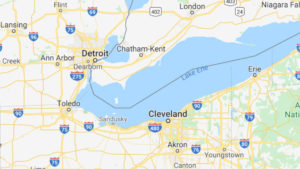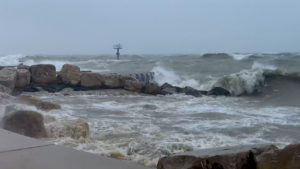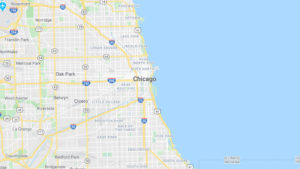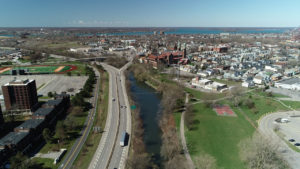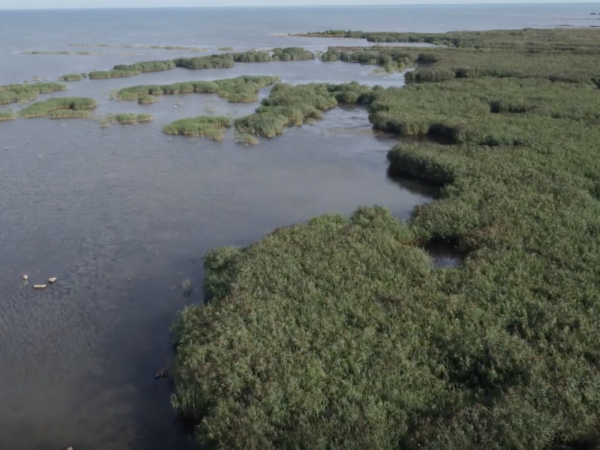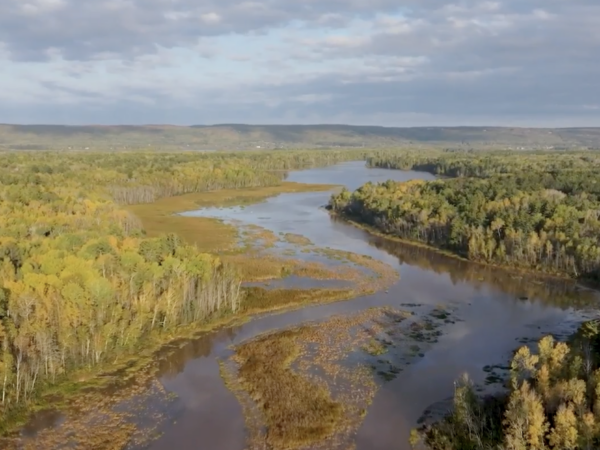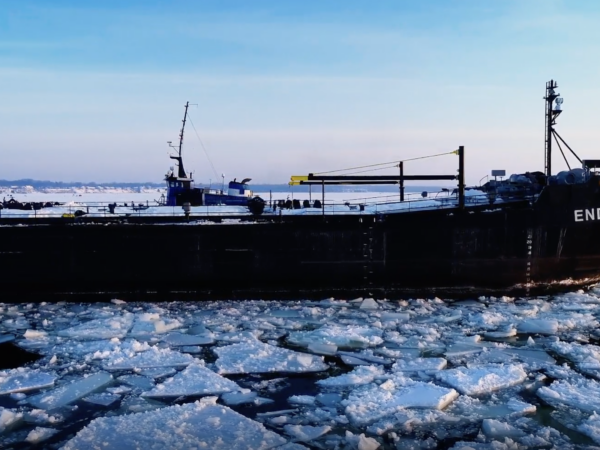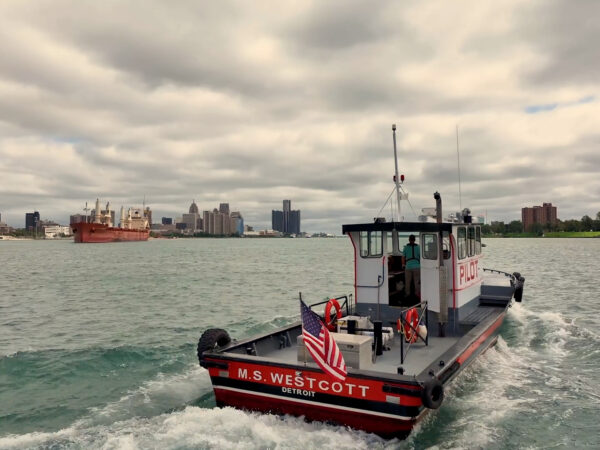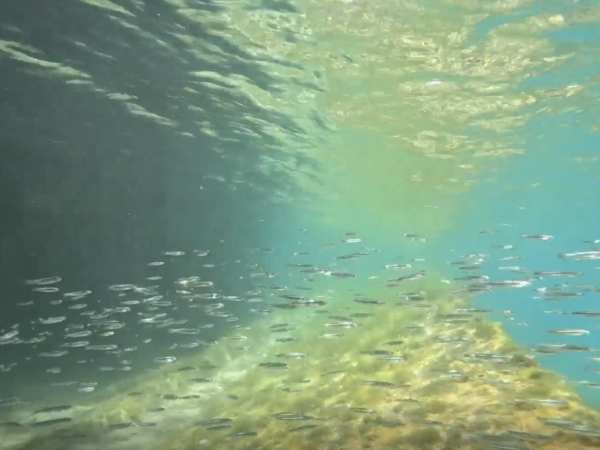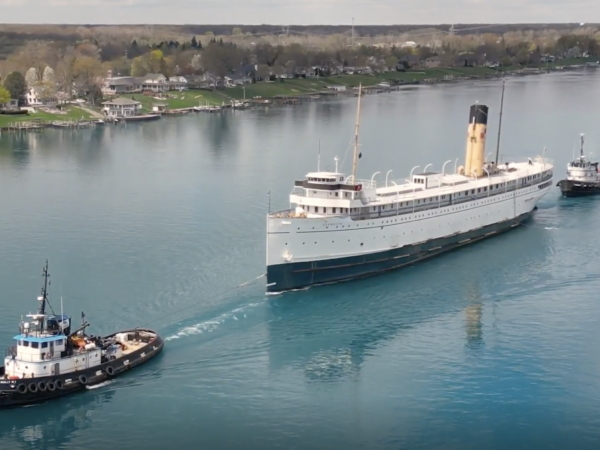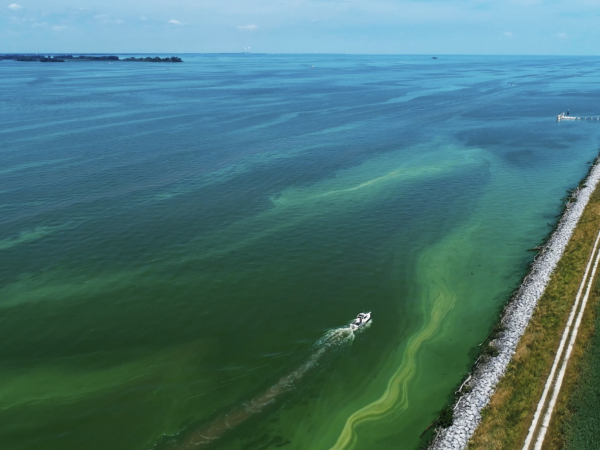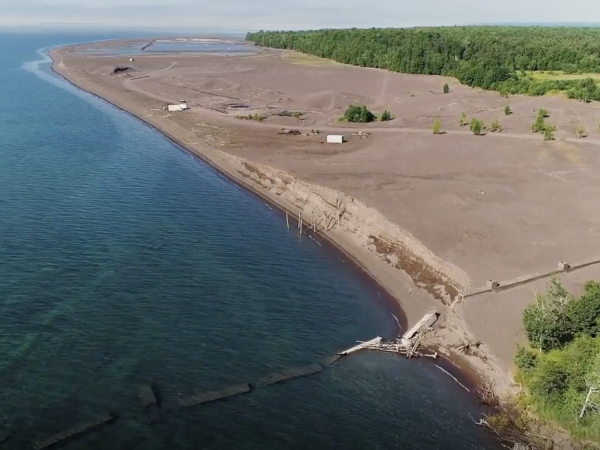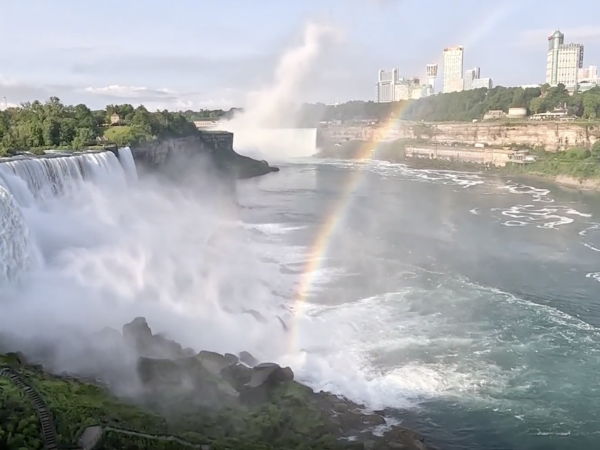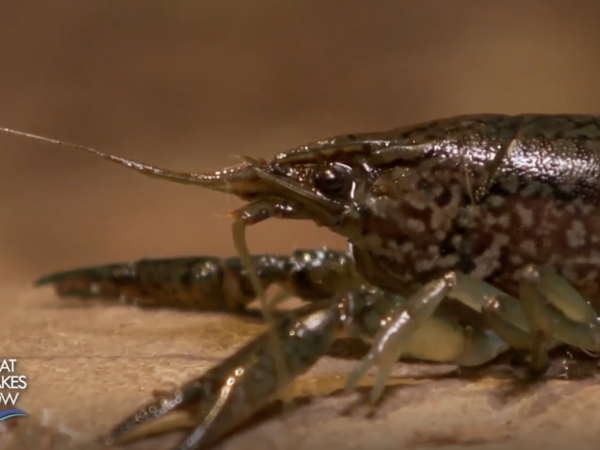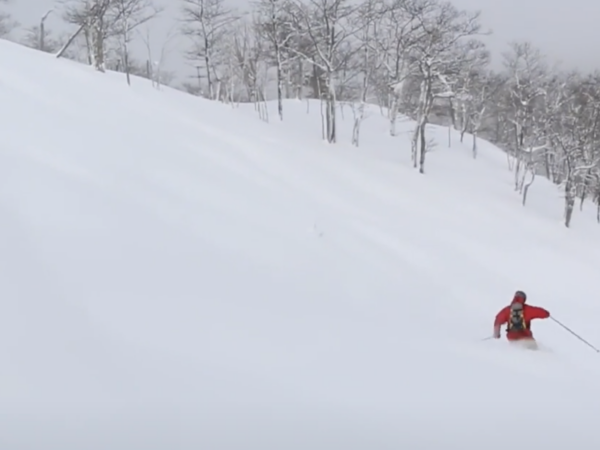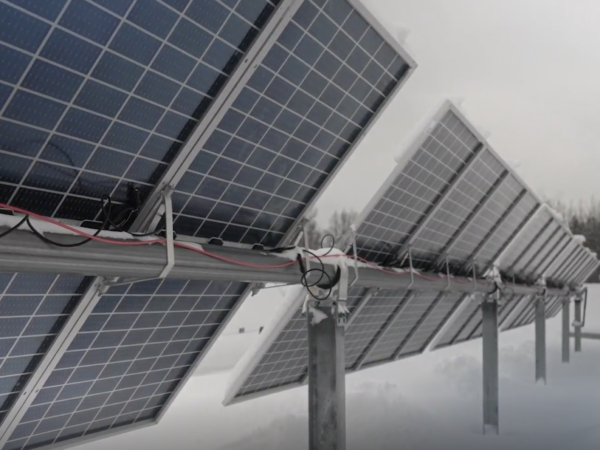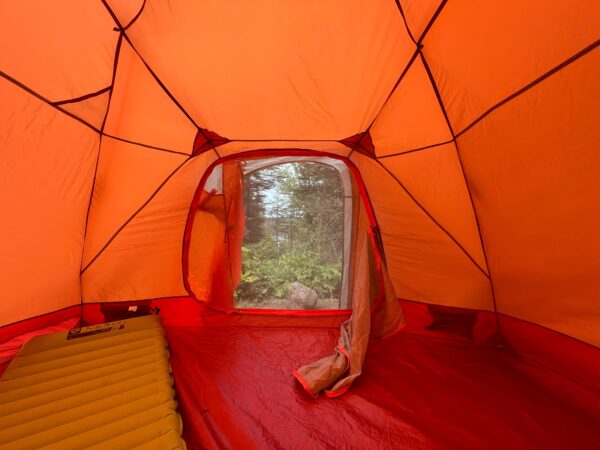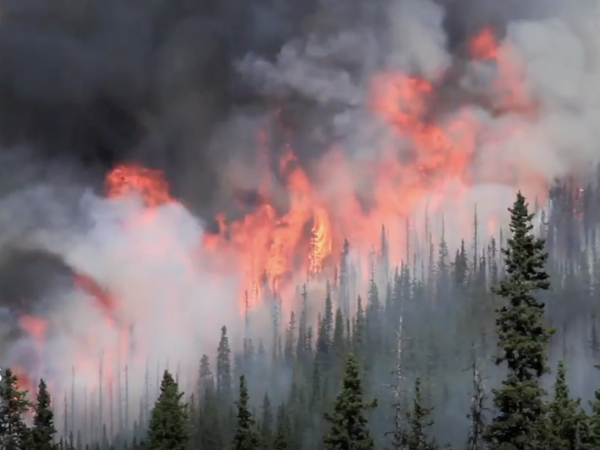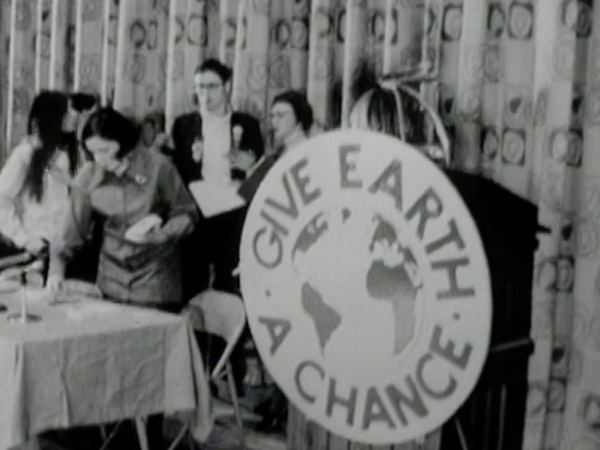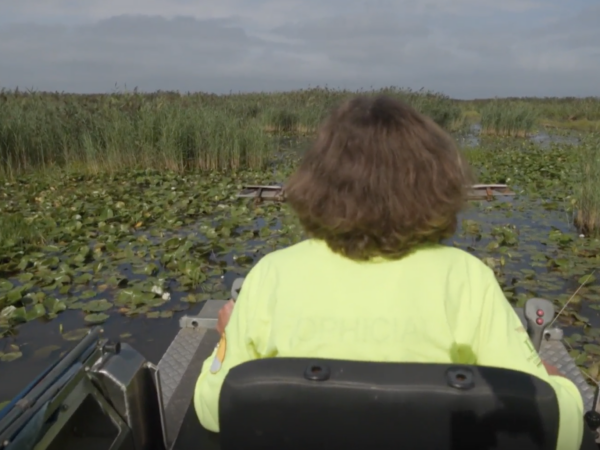Rebuilding Chicago’s iconic lakefront, managing Buffalo’s rainwater and sewage, and tracking the annual algal blooms in Lake Erie are all part of the Great Lakes region’s effort to manage the impacts of climate change. This month, Great Lakes Now takes you to meet the citizens, city leaders and scientists who are working on these issues.
Our show is part of “From Rust to Resilience: What climate change means for Great Lakes cities,” a collaborative reporting project that includes six members of the Institute for Nonprofit News (Belt Magazine, The Conversation, Ensia, Great Lakes Now at Detroit Public Television, MinnPost and Side Effects Public Media) as well as WUWM-FM Milwaukee, Indiana Public Broadcasting and The Water Main from American Public Media.

This project is part of the Pulitzer Center’s nationwide Connected Coastlines reporting initiative. For more information, go to https://pulitzercenter.org/connected-coastlines-initiative.
As climate change makes other parts of the U.S. increasingly inhospitable, the Great Lakes region could become a “climate refuge” where temperatures are relatively moderate and the lakes themselves provide ample freshwater — an increasingly valuable commodity. At the same time, the region is highly vulnerable to the heat waves, flooding and severe storms expected to increase with climate change. Aging infrastructure and sewer systems that combine stormwater with wastewater along with shorelines vulnerable to water level changes, make Great Lakes municipalities especially susceptible to climate change impacts.
Here is all the partner work on the project:
- From Rust to Resilience: Climate change brings new challenges and opportunities – Ensia
- After the Flood: How Chicago is Coping with the Effects of Climate Change – Belt Magazine
- To protect people in the Great Lakes region from climate extremes, weatherize their homes – The Conversation
- Shrinking Shorelines: Climate change-related erosion threatens Great Lakes coasts – Indiana Public Broadcasting
- In the ‘climate refuge’ city of Duluth, a fight brews over the hometown utility – MinnPost
- Single Systems: Great Lakes cities’ sewer designs mean waste in the waters – Great Lakes Now
- As energy use changes in the Great Lakes, so too does the world’s largest freshwater port – MinnPost
- Lessons in Resilience: As climate and the economy changes, Duluth steps up – Ensia
- Climate change threatens drinking water quality across the Great Lakes – The Conversation
- Lake Erie Wind Farm Divides Environmental Activists – Belt Magazine
- Milwaukee Neighborhood Pushes Toward Climate Resilience – WUWM
WHERE WE TAKE YOU IN APRIL
Watch Live on DPTV
Tuesday, April 28 at 7:30 PM
STATIONS CARRYING THE SERIES
DPTV
Detroit, Michigan
WNEO-TV
Alliance, Ohio
WCML-TV
Alpena, Michigan
WDCP-TV
Bad Axe, Michigan
BCTV
Bay County, Michigan
WBGU-TV
Bowling Green, Ohio
WNED-TV
Buffalo, New York
WCMV-TV
Cadillac, Michigan
WTTW-TV
Chicago, Illinois
WVIZ-TV
Cleveland, Ohio
WKAR-TV
East Lansing, Michigan
WQLN-TV
Erie, Pennsylvania
WCMZ-TV
Flint, Michigan
WGVU-TV
Grand Rapids, Michigan
WGVK-TV
Kalamazoo, Michigan
WNMU-TV
Marquette, Michigan
WMVS-TV
Milwaukee, Wisconsin
WCMU-TV
Mount Pleasant Michigan
WNIT-TV
South Bend, Indiana
WCNY-TV
Syracuse, New York
WGTE-TV
Toledo, Ohio
WDCQ-TV
University Center, Michigan
WNPI-TV
Watertown, New York for Ontario signal
WPBS-TV
Watertown, New York for U.S. signal
Have a question about the Great Lakes or life in the region?
Ask Great Lakes Now, and if we can answer it, we might loop it into our coverage so others can learn too.
Submit Your QuestionToxic Algae and the Climate Conundrum
SEGMENT 1 | Western Lake Erie
Every summer, western Lake Erie transforms into something resembling pea soup.
The reason? Cyanobacteria, also known as blue-green algae.
“These cyanobacteria are the organisms that originally invented oxygen-producing photosynthesis billions of years ago,” says Dr. Gregory Dick, a research scientist at the University of Michigan. “But for historical reasons, they’ve also been called blue-green algae. And that sort of informal name sticks with the cyanobacteria. The blooms that we’re seeing in Lake Erie represent an unnatural flux of nutrients.”
Also known by the acronym “HABS” — for harmful algal blooms — these growths contaminated Toledo’s drinking water in 2014. Since then, a web of monitoring sensors have been deployed as sentinels for water quality and public health. That safeguards Toledo’s drinking water.
But in the coming years, climate change looks likely to complicate the situation.
Of the phosphorus entering the lake, roughly 70 to 90 percent does so during the 10 worst storm events each year — and climate change is poised to make those storms more frequent and severe.
Watch the Great Lakes Now segment to learn more about this work.
Here is other Great Lakes Now work about Lake Erie and the algal blooms:
- Michigan bans spreading manure on croplands in winter months
- Ohio’s toxic algae plan could give other states a blueprint
- Lake Erie Algae: 2019 was bad but could have been worse
Watch our segment about the Great Black Swamp.
Chicago’s Battered Beaches
SEGMENT 2 | Chicago, Illinois
A massive storm hit Chicago in early January, whipping up 23-foot waves on Lake Michigan and ravaging the city’s waterfront. It seriously eroded some of the city’s beaches, putting residents along the lakefront on edge.
Winter storms are nothing new, but scientists say climate change will make these storms more severe and more frequent. Combined with this year’s high lake levels — which have been at or near record levels for months—the January storm offered a sobering preview of what may become a more common occurrence.
After the storm, Chicago’s city council adopted a resolution. Citing catastrophic lakefront erosion, citywide flooding and severe unseasonal weather, it calls for a “climate mobilization” on a scale not seen since World War II.
Alderman Matt Martin co-sponsored the resolution.
“We’re living in a time of profound uncertainty and instability,” he says. “However Chicago goes, that’s how Illinois is going to go. And we can be in a position to help guide where the entire country is going to go from a policy standpoint.”
From project partner Belt magazine:
From project partner The Conversation:
From project partner Indiana Public Broadcasting:
Watch the Great Lakes Now segment to learn more about the storm and Chicago’s response.
Check out Great Lakes Now’s coverage of Chicago HERE.
Here is other Great Lakes Now work about climate change and issues with storms and water levels around the region:
- Great Lakes Moment: Decline of bird species should serve as a warning
- Wisconsin governor declares state of emergency after flooding, storms
- New York faces calls to act more swiftly on climate change
Watch our segments about Vanishing Shorelines and Lake Ontario Shoreline Flooding.
Buffalo Rain Check
SEGMENT 3 | Buffalo, New York
In his 2020 State of the City address, Buffalo Mayor Byron Brown announced that the city would launch a $30 million environmental impact bond — the largest in the country’s history.
The bond will allow the city to incentivize private property owners to install and maintain green infrastructure, something the Buffalo Sewer Authority has already been doing as part of its Rain Check initiative.
Using natural systems to manage stormwater runoff is one type of green infrastructure that’s part of the project, says Kevin Meindl, a landscape architect with the Buffalo Sewer Authority.
“In the city of Buffalo, we have a lot of impervious areas. Almost 56 percent of our city is actually hard infrastructure. So that’s pavement, concrete, asphalt and it’s just really lacking in green space and tree canopy,” he says “So when it rains, that water is now able to enter into the ground into a planted area with soils and plants and trees and allow us to mimic the natural water cycle throughout our city.”
More rainwater sinking into the ground through these green infrastructure projects means less rainwater entering Buffalo’s combined sewer system.
Too much stormwater can overwhelm the sewer system and lead to a combined sewer overflow, which results in rainwater and sewage being released untreated into streams and rivers that flow into Lake Erie.
Watch the Great Lakes Now segment to learn more about the Buffalo Rain Check project.
Check out Great Lakes Now’s coverage of Buffalo HERE.
Here is other Great Lakes Now work about climate change and stormwater management:
Previous Episodes
Featured Articles
Digital Credits
The Great Lakes Now Series is produced by Rob Green and Sandra Svoboda.



